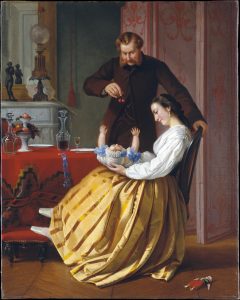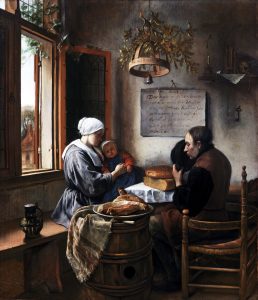Databases
The databases of family history
A variety of written sources provides information about the lives of families from the sixteenth to the nineteenthcenturies, including their forms and transformations, and the connections among (or separation of) their members. The richest sources of data are censuses, genealogies, and birth, marriage, and death records.
The goal of our research team is to create a searchable, expandable, unified online database on family construction and transformation that is accessible to historians, family researchers, and members of the general public who are interested in the complex history of the family as an institution. The database will also be useful for micro-historical analyses of social history and historical demographic patterns over time, thus facilitating the discernment of changes in family structures and family strategies, differences between social strata, and narratives drawing on the data contained in the databases. We harmonize existing databases, add to the data they contain, and improve their potentials as resources.

Jan Kupeczky: Hungarian aristocratic children, around 1710
The following databases will be integrated:
Aristocracy database
This database was created between 2004 and 2008 (The Project on the Family Relationship System among the Hungarian Aristocracy in the 16th and 17th Centuries, HSRF). It contains data concerning 210 aristocratic families and 2,000 life events and family relations. Our project will integrate and add to these data. Furthermore, it will cover a longer period and a wider archival resource base. The database will facilitate the reconstruction of aristocratic family networks, the examination of the familial and political roles of adoption and legitimation strategies, and analyses of the meanings of aristocratic status among members of the Hungarian aristocracy in the Habsburg Empire.

Martin van Maynes: Miklós Pállfy and his family, circa 1760
Nobility database
This database focuses on members of the middle stratum of the landed nobility in selected counties, including Békés, Bihar, Szatmár, and Nógrád in the 18th and 19th centuries. The database is designed to facilitate comparisons of family structures and social networks among the aristocracy and the landed nobility, the study of the family and kinship networks of the middle-estate noblemen, and social-historical analyses of the county nobility in a regional context.

Lilly Martin Spencer: Family portrait, 1850-1851.
Urban database
The urban database is based on data concerning four settlements: Košice (1625–1863), Sopron (1624–1730), Bratislava (1710–1863), and Preševo (1710–1863). Previous research projects collected an immense array of data concerning baptisms, marriages, and deaths among the urban populations and elites of these cities between 1625 and 1863. In addition to integrating and adding to these databases, this project aims to collect data from a wider geographical era over a longer period of time.

W. L. Germon: Family collage, circa 1855.
Household database
This database contains the census data of a few selected settlements, such as Zsámbék, Tök, and Perbál in the nineteenth century. The database is currently being expanded (Fertility Transition in Micro-perspective in Nineteenth and Twentieth-Century Hungary, NRDI). It is based on the baptismal, matrimonial, and death certificates from these three settlements. There are some 5,300 individual pieces of information (for instance dates and names) concerning marriages in the database. The approach based on the reconstruction of different patterns and configurations of “families” complements the Conscriptio Animarum’s data in Zsámbék: a research effort which has been underway now for some 38 years addresses the makeup of about 15,000 households on the basis of 80,000 unique records. This is supplemented by the data concerning families in Törökbálint, Biatorbágy, and Bonyhád. The household database makes it possible, for instance, to determine the prevalence of stepfamilies and the life expectancy of children living with stepparents. It also allows us to form a more complete and more nuanced picture of the various structures of households and the ways in which they changed over time.

Jan Steen: Praying before meals, 1660.


